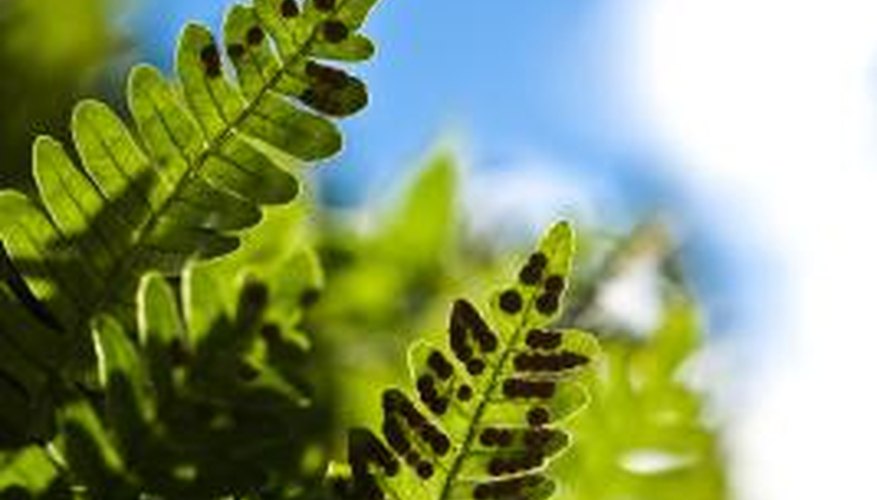There are many pests that feed on ferns and can cause problems for the plant, but only a select few known species of insects lay their eggs on ferns. For the most part these species do not cause extensive damage to a fern plant and are often unnoticeable. More often than not, what appear to be insect eggs are actually spores produced by the fern for propagation.
Fern Spores
Fern spore sacs are often mistaken for bug eggs. Known as sporangia, these spore sacs develop over the summer months and release spores by the millions upon maturity. The appear on the underside of the plant's leaves in large, often symmetrical clusters which form circles. The collections of sporangia are orange to brown in colour, sometimes less than a centimetre wide, up to a couple of centimetres in diameter. These spores are central to the fern's reproductive process and should not be removed if propagation is desired.
- Fern spore sacs are often mistaken for bug eggs.
- Known as sporangia, these spore sacs develop over the summer months and release spores by the millions upon maturity.
Fern Scale
Fern scale is a small insect, 1.5 to 2.5mm long, that lives out its life cycle on and around ferns. Fern scale eggs are brown and oval shaped, about 0.2mm long, and found in groups. Unless infestation is severe, damage to a fern plant by fern scale is generally negligible. Male adults are bright white and may be cosmetically unappealing but will not kill the plant.
- Fern scale is a small insect, 1.5 to 2.5mm long, that lives out its life cycle on and around ferns.
- Fern scale eggs are brown and oval shaped, about 0.2mm long, and found in groups.
Moth Eggs
A few moth species, including but not limited to the Florida fern caterpillar, ostrich fern borer and the Callidulidae, lay eggs. Caterpillar eggs are usually laid in a young fern before it has unfurled; they are oval shaped and flat, yellow to green in colour and 0.5mm wide. The larvae of these moths can severely damage a young fern, but are not found on mature ferns and therefore pose no threat to them.
Removal
Ferns are especially sensitive to pesticides, therefore potent chemicals are not recommended for use on a fern plant that is infested with insects or insect eggs. Instead, use a horticultural oil, spraying once a week for two weeks, and thoroughly covering the entire plant. Another safe alternative is insecticidal soap, which should be sprayed every one or two days for a week to remedy the problem.
